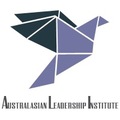Leadership Skills: How To Become An Effective Storyteller
How to Be An Effective Storyteller
By Mark Wager
Throughout history and across civilisations people have shared stories. It’s been a mechanism to share experiences, ideas and provides people with an opportunity to explore what is right and what is wrong. Leaders are now utilising the power of storytelling to inspire and motive their teams, portray a shared vision and highlight the desired culture and values of the organisation and companies are starting to see the benefits of storytelling.
Nike, one of the worlds most successful brands have designated all their senior executives as corporate storytellers, other companies such as Microsoft and NASA make storytelling the focal point of their Leadership strategy ensuring that all their Leaders have the skills in order to effectively convey their organisations story and how everyone within that organisation sees themselves as the hero of the story and thereby increasing engagement, motivation and productivity.
For leaders it doesn’t matter what you say it’s what people hear that counts. If you can get everybody onboard with the same message and if everyone shares the same vision then the team can achieve remarkable things. The best way to do this is to tell a story. In this weeks article I want to share with you how you can structure and use stories to become a better Leader
One of the most influential books on storytelling was by Jospeh Campbell who in 1949 wrote the book The Hero with a Thousand Faces. In his work he reviewed thousands of famous stories and noticed a pattern. The most successful stories followed a similar structure which consists of a series of steps that he called the Hero’s journey. It’s a structure that you can see in a lot of successful movies and it’s a very useful tool for Leaders to enhance their stories.
Make the audience the hero of the story
Before we get to the steps of the hero’s journeys it’s important to remember just who the hero is within the story and it’s not the Leader. When you analyse the speeches of the Leaders who are considered to be the most charismatic you will find that they talk more about the audience than they do about themselves. The most successful Leaders ensure that it’s the audience who is the hero of the story and it’s the Leader who is the guide helping the hero win the day.
Step one: Introduction to the Hero’s world
The best stories start with the storyteller setting the scene, intoxicating the characters and their normal life. For leaders, this is the stage when you explain the reality of what’s happening at the moment, it’s current direction and the good and bad the team is doing. Explain why they are the main characters of the story and the important role they play.
Step two; Call to action
The next stage of the story is to gain commitment from the team to take on the challenge. You’ve explained the current state and now you need to describe the desired state, what you want the team to achieve and most importantly why. Try to stay away from numbers, as they don’t inspire people. We want to increase sales by 10% is not a great call to action, instead describe the difference they can make to peoples lives including their own.
Step three: Crossing the threshold
I often see Leaders hesitate to highlight the difficulties of the tasks facing the team yet a hero is not a hero without a challenge to overcome. If the journey is easy then it’s not a journey that inspires people instead people are inspired by achieving something that they never imaged would be possible. Feel free to explore just how difficult the journey will be, the obstacles and the difficulties the team will face while at the same time staying positive.
Step four: The mentor
In the best stories the hero is not a hero at the start of the journey, instead they become the hero through their actions and on their journey they require help because every hero has a mentor. King Arthur had Merlin, The Lord of the Rings had Gandalf and Star Wars had Obi Wan Kenobi. This is the Leaders role, to be the mentor and not the hero. The leader need to explain how they will guide, protect and help the team on their journey. They are the mentor to the team’s heroes.
Step five: The First challenge
Every great journey begins with a single step. In this part of the story explain what is the first significant step the team has to take, their initial obstacles which shouldn’t be too difficult so that it shouldn’t put people off before they start but it shouldn’t be so easy that it’s not a challenge. This is the team’s first test and a clear demonstration of their commitment to the team’s new vision.
Step six: The ordeal
Once the team is aware and comfortable with the first challenge they then need to be aware of just how difficult the journey will become. They need to know their darkest moment so they can identify it when they find it. Success always happens as a result of an earlier failure. The team needs to know that this failure may be so that they appreciate that it’s just a part of their journey. They should see the lessons that every failure offers.
Step seven: The final battle
Just when all is lost the hero rises again and wins the day, sounds familiar? The leader needs to bring light to the story, yes we’ve spent time on the difficulties but now it’s time to describe what success will look like, the personal qualities the team has or want to have, their skills, the commitment of their colleagues and their mentor (the leader) and how they will succeed against the odds.
Just as Jospeh Campbell identified the similarities in the most famous and successful stories. Leaders can use these lessons in order to improve their own storytelling skills. If a leader can share a story in which the team is the hero and the leader is the mentor who will guide them over many obstacles and when all is said and done the hero achieves the impossible. Leadership is difficult but if the leader can also become a story teller then the leader will find that they and their team will live happily ever after as they do in many a heroic story.
About the Author:
Mark Wager is the Chief Leadership Coach at the Australasian Leadership Institute. Originally from the United Kingdom but now calling New Zealand his home, Mark shows leaders across the Asia Pacific region how to influence, motivate and inspire their teams. Driven by a frustration of attending many ineffective workshops during his 30 year managerial career Mark has made his passion in life to redefine how leaders are trained.
Mark takes advanced psychological theories and makes them accessible to the modern leader regardless of their background, experience or industry, by developing customised Leadership workshops and individual coaching sessions that combine practical real-life scenarios with a mixture of British wit. Mark dispels the myth that there are certain Leadership skills that can’t be learnt.
Leaders from some of the regions most prestigious organisations have been trained by Mark including the delegates of the European Union, Weta workshops, Amnesty International, Unicef, Barnados, St Johns, Red Cross, NZ Basketball, NZ Tennis, NZ Hockey, NZ Netball, NZ Rugby League, Ministry of Justice, Department of Internal Affairs, NZ Defence Force, the Fijian Broadcasting Corporation, The Fred Hollows Foundation, Sofitel resorts, Raddison Hotel Group, Te Whanau Waipareira and many more.
You can contact Mark via the enquiry form below
Posted: Thursday 11 June 2020

